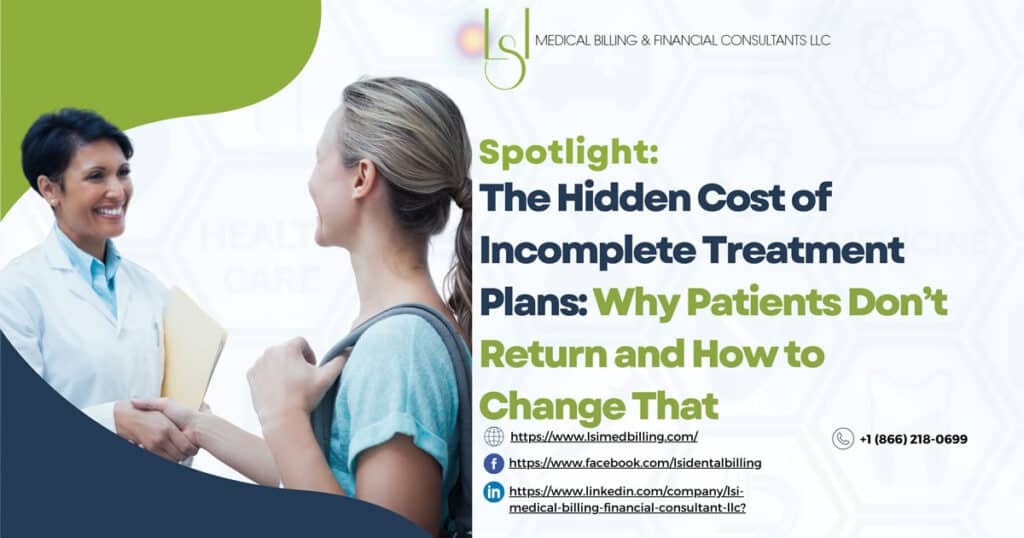Blog
The Hidden Cost of Incomplete Treatment Plans: Why Patients Don’t Return and How to Change That
Many dental offices struggle with a recurring challenge: patients who begin a treatment plan but never follow through to completion. While reminders and incentives can help, they don’t address the real reasons patients abandon their dental care. To effectively bring them back, it’s crucial to understand the deeper obstacles at play.
The Psychology of Avoidance: Fear, Guilt, and Anxiety
For many patients, avoiding the dentist isn’t just about forgetting an appointment—it’s a psychological barrier.
- Fear and Anxiety: Some patients associate dental visits with pain or discomfort. If their last visit involved an uncomfortable procedure, they may hesitate to return, even if the remaining treatment is painless.
- Guilt and Embarrassment: Patients who have delayed treatment may feel ashamed about neglecting their oral health, making it harder for them to schedule their next visit.
- Feeling Overwhelmed: If a patient was presented with an extensive treatment plan, they might feel intimidated and decide to delay or ignore it altogether.
The Financial Hurdle: Breaking Down Cost Perception
Cost is another leading reason why patients don’t return. However, in many cases, the issue isn’t just affordability—it’s how the costs are presented.
- Lack of Immediate Pain = No Urgency: If a patient isn’t in pain, they may not see the value in spending money on a treatment they believe can wait.
- Sticker Shock: If treatment is presented as a lump sum instead of a phased plan, patients may feel overwhelmed and put it off indefinitely.
- Failure to See the Long-Term Cost: Many patients don’t realize that delaying treatment often leads to more expensive and invasive procedures later. For example, an untreated cavity today could result in a costly root canal or extraction in the future.
Shifting the Conversation: Educate and Empower Patients
Rather than simply reminding patients to come back, dental offices need to proactively address these concerns. Here’s how:
1. Normalize Dental Anxiety & Offer Solutions
- Train staff to recognize signs of anxiety and offer reassurance.
- Promote sedation options or comfort-focused approaches to ease fears.
- Use testimonials from other anxious patients who successfully completed their care.
2. Reframe the Financial Conversation
- Instead of presenting a large treatment plan as one expense, break it into manageable steps.
- Clearly show how postponing treatment will increase costs in the future.
- Offer financing options in a way that highlights affordability, not just availability.
3. Educate on the Consequences of Delayed Treatment
- Use visuals or real-life examples to illustrate what happens when minor issues escalate.
- Share patient success stories where timely treatment prevented serious problems.
- Send educational emails or social media posts that reinforce the importance of completion.
4. Create a Judgment-Free, Supportive Office Culture
- Ensure patients feel welcomed, even if they’ve been away for a while.
- Train staff to approach follow-ups with encouragement rather than pressure.
- Make it easy for patients to return by offering flexible scheduling and a warm reintroduction.
Conclusion: Turning Abandonment into Action
Re-engaging patients with unfinished treatment plans requires more than reminders—it requires addressing their deeper fears, financial concerns, and lack of urgency. By shifting the focus from simple follow-ups to patient education, financial transparency, and emotional support, dental offices can turn hesitant patients into committed ones.
Are you struggling with high rates of unfinished treatment plans? Contact us today for a consultation, and let’s develop a strategy to bring your patients back on track for a healthier smile!



